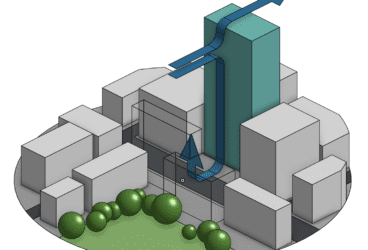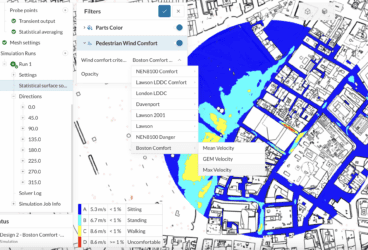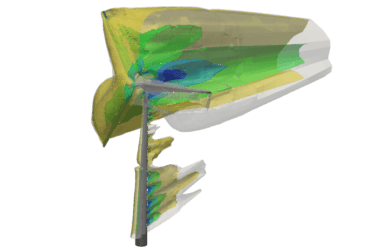In most workspaces, thermal comfort is somewhat taken for granted. We expect the place we work in to be a comfortable environment that protects us from the summer heat or winter cold. Scientifically, our bodies are designed to function within a very tight range around 37 degrees Celcius. If our body temperature drops or rises a little, we might shiver or sweat and feel the need to add or remove clothes. In many office spaces today, however, work attire is fairly restricted and so employees are not able to wrap up in a blanket to keep warm or strip down to cool off. An uncomfortable temperature in an indoor space can affect the way we work, and not only by impacting our general feeling of satisfaction.
If a person is too warm, studies suggest they will become much less productive. Too cold, and they may become distracted from work or type more slowly. Airflow also plays a key role in thermal comfort. While draughts may be undesirable, the movement of fresh air around a room can greatly impact on wellbeing, improving indoor air quality and even helping to avoid the spread of common colds. For this reason, thermal comfort becomes essential for both employees and employers. Engineers responsible for domestic or industrial building design should assess and optimize thermal comfort to ensure the most comfortable indoor environment possible. And this is much more easily done with HVAC design software and tools for simulation.
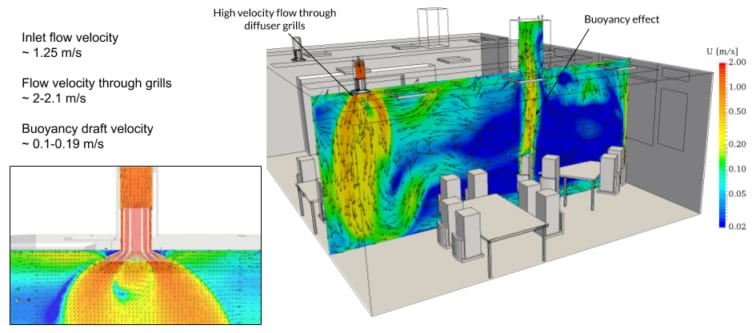
Conduction, Convection, and Radiation—How Heat is Transferred
The introduction highlights two key areas of thermal comfort; air temperature and air movement. Both can be controlled and improved with certain devices, such as heaters and air conditioning units, fans and vents, or even natural ventilation tactics. This is because of the way heat is transferred. One way that heat is transferred is through thermal conduction, where two objects come into contact, their particles collide, and energy is passed on from one to the other. Two other types of heat transfer, of particular interest to this project, are convection and radiation which occur without the need for two entities to physically touch. With convective heat transfer, heat is transported by a fluid (air or water for example). And with thermal radiation, heat is transferred by photons in electromagnetic waves, therefore requiring no medium. This property of thermal radiation is a key difference of convective heat transfer, and must be included in computational fluid dynamic (CFD) modelling to achieve realistic indoor thermal comfort results.
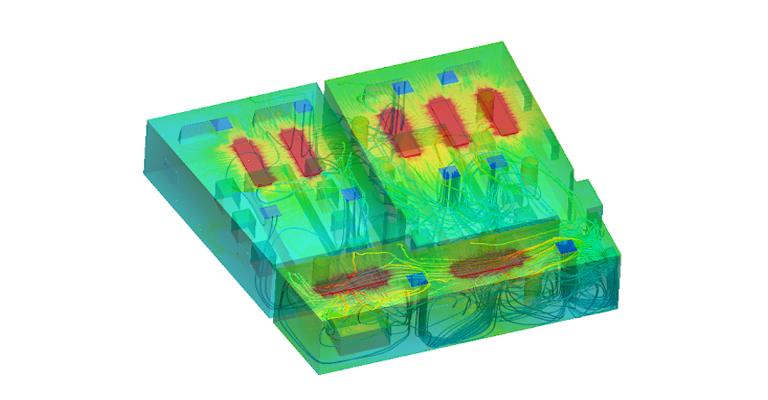
Our Scenario: Radiation and Thermal Comfort in Indoor Spaces
Previously, it was difficult to include the effects of radiation into an HVAC simulation, which led to offsets in cases involving higher temperatures. Now, we can simulate convective heat transfer, conductive heat transfer, and thermal radiation in one platform to easily see how heat moves within a room and how it affects the objects, surfaces, and inhabitants. As people are also heat sources themselves, they too are included in the simulation. This will allow for a clear analysis of thermal performance in the simulated office design presented.
The Simulation Setup
This simulation assesses thermal comfort in an office space. It was a steady-state analysis using the k-omega SST turbulence model. The CAD model included heating panels and air inlets on the ceiling, and air outlets on one side wall. Air, set at 17°C, was set to enter the room at 0.5m/s. The furniture and walls were modelled as adiabatic so they would not lose heat, but the cylinders representing people were set as 50W/m2 heat sources to represent heat loss from an average human body. All surfaces, including transparent windows, were considered to have an emissivity of 0.9 as most materials used in an office would have a thermal emissivity around this ratio. The analysis lies within convective heat transfer with radiation in order to draw comparative conclusions.
Comparative Results: A Win for Radiation
Using convective heat transfer alone, heat rises and amasses at the ceiling, leaving the lower portion of the room and the people cold. This uneven distribution is due to the simulation only taking a convection current into consideration. As a result, air temperature varies between extremes (too hot or too cold) at floor or ceiling level and average air and surface temperatures are below comfortable. With radiation enabled, the analytic difference is clear. Heat distribution is much more even, with less heat concentrated on the ceiling and no cold spots. Heat is seen to radiate to the furniture, people, and ground which improves temperatures at shoulder height and creates a much more comfortable environment to work in.
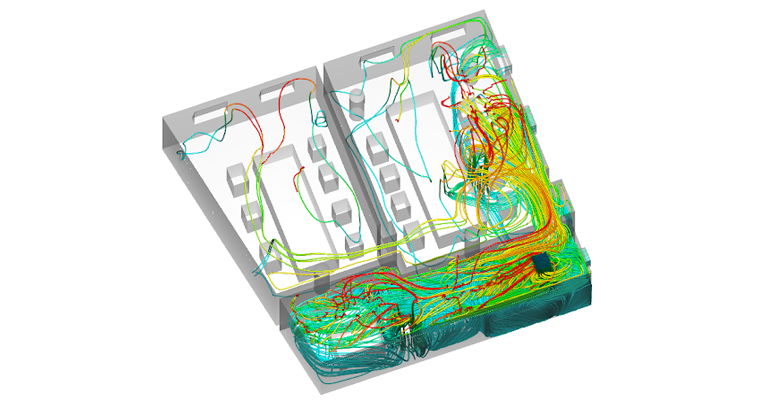
As mentioned, air flow is also a key consideration in thermal comfort. In this airflow simulation, the comparison between convection alone and with radiation signals a difference in velocity streamlines. With convective heat transfer, vertical streamlines show dominant vertical movement as warm air is pushed to the ceiling. With radiation enabled, velocity streamlines show higher levels of lateral movement and air recirculation, reflecting a much more even distribution of air and heat in the room and into other rooms.
Watch a detailed overview of this simulation and results in the webinar recording available here.
New Capabilities with Radiation in CFD Simulation
It would not be possible to see these results if the effects of radiation could not be entered into the simulation. With the new ability to include radiation and model different heating or cooling sources into SimScale simulations, designers can understand the thermal comfort in a room or entire building with increased accuracy. This leads to thermally optimized designs with informed decisions on where to include heating or cooling devices or whether ventilation is required. Overall, better information leads to improved thermal comfort and, such as in this case, boosted employee satisfaction.
To learn more about radiation heat transfer analysis from SimScale, check out our documentation.

Other Thermal Comfort Resources:
- Learn about mechanical ventilation simulation.
- Read about ensuring thermal comfort with HVAC for a school building.
- Learn how to improve thermal comfort in an office environment.

